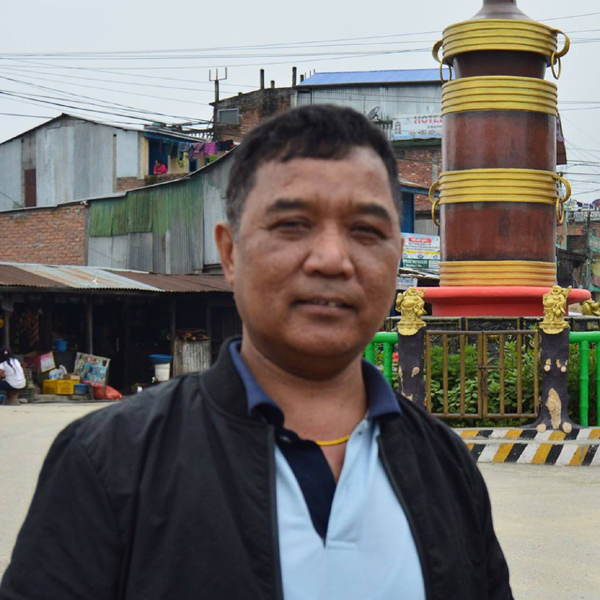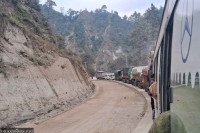Opinion
The forgotten folks
Nepal must do more to address the needs of its senior citizens
Chun Bahadur Gurung
Nayak Pariyar, aged 75, was lucky to be quickly pulled out of the rubble and saved by the rescue team in the immediate aftermath of the April earthquake. After he was rescued from the debris, Nayak, a tailor by profession in Sindhupalchowk, found his legs and his right hand fractured. “My son cannot stitch cloth like me,” said Nayak, walking on crutches, with tears in his eyes.
Nayak not only lost his home but also his limbs. He heads his family and is responsible for putting food on the table. After the quake, he has been unable to plug away his regular works. Unfortunately, there is no data on how many senior citizens like Nayak who are struggling to lead a normal life after the quake. As the world recently marked the 25th International Day of Older Persons (IDOP) on October 1, it is an opportunity to pursue novel ideas and continue the crusade to ensure the rights of older people.
While the Post Disaster Need Assessment prepared by the National Planning Commission revealed over 8,790 casualities and 22,300 injuries by the quake, no ageing-sensitive analysis has been undertaken in Nepal so far. It has been proven that people are affected differently by various calamities and crises. But we do not have data on how many senior citizens, persons with disabilities and pregnant women were severely hit by disasters like the Great Earthquake.
Inevitable ageing
During the rescue and relief operation phase, the most common thing we witnessed was the rescue of people and the act of providing them with drinking water, dry food, first-aid medicines and transitional shelters. But first-aid kits are not enough for older people suffering from chronic diseases like hypertension and diabetes for example. They cannot chew and swallow most of the dry food like beaten rice. Other food items included in the relief packages were also indigestible. Transitional shelters have also reportedly found not to be older people-friendly. Given the special needs of the older people, the state cannot close its eyes to them as ageing is a natural and inevitable phenomenon.
According to HelpAge International—an agency which specialises on the rights of older people with global presence and is dedicated to ensuring the older people’s rights—nearly 10 percent of Nepal’s population is aged 60 or older. Nepal has now overtaken other South Asian countries and has the second highest life expectancy after Sri Lanka, according to a research paper published in the British medical journal Lancet.
The average lifespan of a Nepali is now 71 years. The UN suggests that the number of older people in the world will double by 2050. Further, data suggests that older people suffer greatly from disasters even in developed countries. According to statistics, 75 percent of those who were killed by Hurricane Katrina in the US in 2005 were over 60. But they just made up 15 percent of the population of New Orleans. Further, in 2011, 56 percent of those who died in the Great East Japan Earthquake and Tsunami were 65 or older, despite comprising just 23 percent of the population.
Not well prepared
The April 25 earthquake and a series of aftershocks explicitly elucidate the misery and vulnerability of senior citizens of Nepal. Clearly, the country’s growing population of older people is well-matched with the global scenario. The problems faced by older people is gaining more visibility due to declining fertility and rising longevity of the people worldwide. Unfortunately, Nepal is still not prepared for this demographic transition.
Although the government of Nepal is sluggish and often fails to act in time, the civil society and NGOs can continue to speed up their campaigns with reference to national and international human rights laws. The Senior Citizens Act 2006, for example, enacted to provide social security of senior citizens, is a contradictory law. As per its definition, senior citizens are people in their sixties and over, but they are legally ineligible to get social security allowance. They are only entitled to a meagre amount of allowance at the age of 70. A central committee for the welfare of senior citizens has been mandated to prepare policies, plans and programmes to ensure the protection and social security of senior citizens, but their work is hardly visible.
Global call
Currently, the rights of older persons are protected in a broad sense under existing international rights covenants. The Universal Declaration of Human Rights applies to people of all ages. Regardless of age, both the International Covenant on Civil and Political Rights (ICCPR 1966) and the International covenant on Economic, Social and Cultural Rights (ICESCR 1966) apply to all ages as well. However, older people worldwide have set off their campaign for the Covenant on the Rights of Older People.
HelpAge International averred that the rights of older people remain invisible in the international human rights system. The organisation further says that only four out of more than 38,000 recommendations in the Human Rights Council’s Universal Periodic Review have specifically addressed discrimination against older people. Taking this and their pain into account, the older people and rights activists continue to call for the Convention on the Rights of Older People.
The UN also seeks to strengthen cooperation for social development, particularly in the areas of social inclusion of older people, persons with disabilities and indigenous peoples. The UN facilitates and promotes the Madrid International Plan of Action on Ageing as it promotes mainstreaming ageing issues into development agendas. With support from the human rights community, one day this covenant will be universally valid and it will serve as the best tool to advocate the rights of older people locally and globally.
Gurung is a former spokesperson for the Office of the UN High Commissioner for Human Rights, Nepal




 13.3°C Kathmandu
13.3°C Kathmandu












